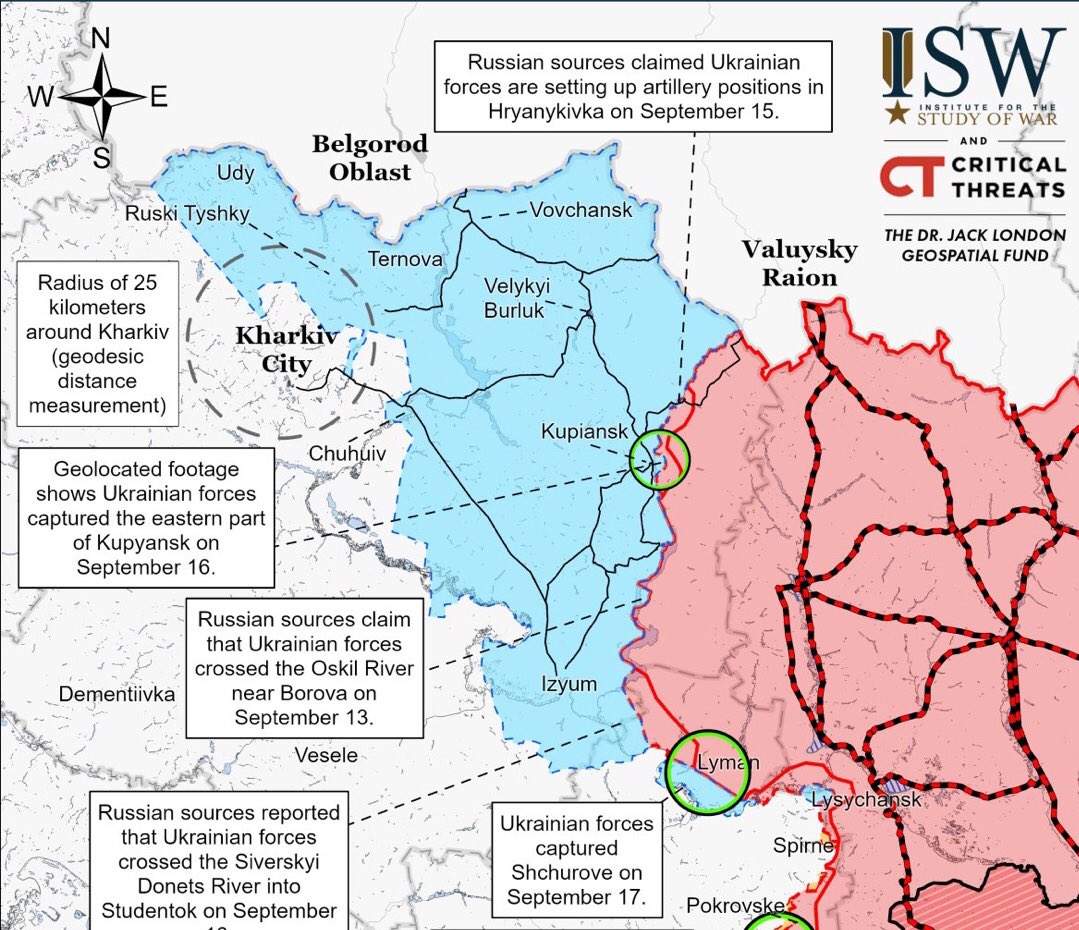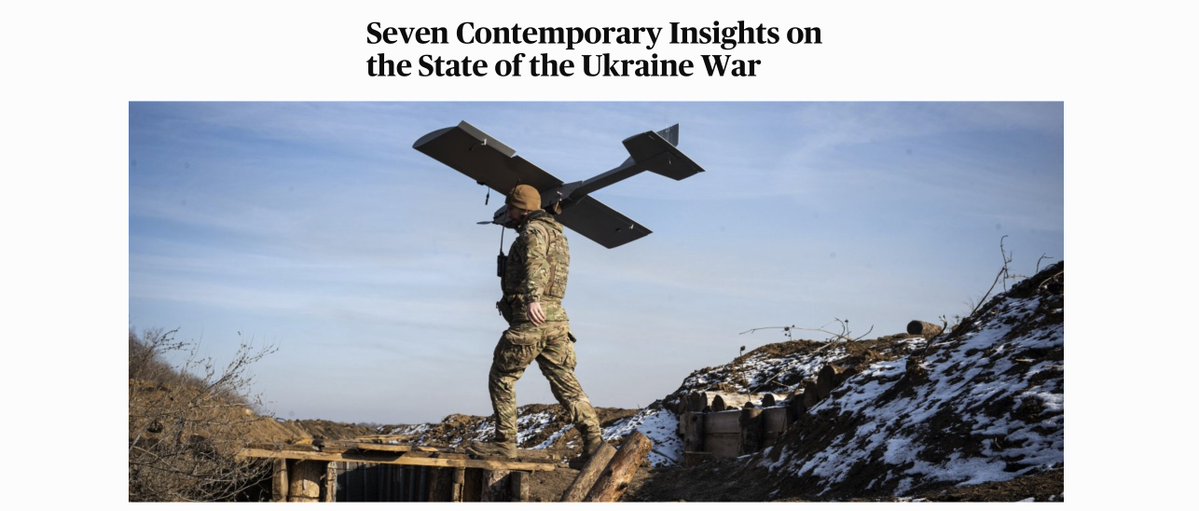There is a lot going on in #Ukraine at the moment. The macro story is that Russia appears to have lost the initiative at every level. But there is also an interesting story to be told about Ukrainian campaign planning. 1/24 

2/ The Ukrainian offensive in the north east is continuing to exploit a bumbling and incoherent Russian defensive scheme to the east of Kharkiv. Thousands of square kilometres of Ukrainian territory have been recaptured, and many towns and their inhabitants have been liberated. 

3/ Even the Oskil Rver defensive line, rapidly established by the Russians, appears to be crumbling. Deception and operational art have been central to Ukrainian preparations for their achieving surprise against the Russians in this new phase of the war.
4/ Deception. That it was able to exploit this opportunity indicates that Ukraine had an excellent plan to deceive Russian overhead collection assets as well as their tactical reconnaissance and surveillance.
5/ As one military interlocutor in Kyiv confirmed, Russian tactical reconnaissance in the east of Ukraine has been poor. It has generally consisted of ‘advance to contact’ with infantry and armour, rather than through the use of dedicated air and ground reconnaissance assets.
6/ This means that the environment is ripe for tactical and even operational surprise, something the Ukrainians clearly recognised in their planing for the Kharkiv offensive.
7/ Operational Design. While the Russian focus was primarily on its operations to defend its holdings in the south, and conduct small scale attacks in the Donbas, #Ukraine planned and launched an operation in the north.
8/ This is not to say that Ukraine’s operations in the south were a feint. They were not, and this was recently confirmed to me by a senior Ukrainian military planner during my visit to Kyiv. The north & south are mutually supporting offensives in a larger operational design.
9/ Operational design is an important component of military professionalism. Through good operational design, military commanders and their staffs’ sequence and orchestrate tactical goals and actions to meet desired strategic and political outcomes.
10/ Ironically, it was the Russians in the early 20th who were early advocates for such operational thinking about military operations. This is not obvious with the current Russian military performance, which has demonstrated historic levels of incompetence and stupidity. 

11/ For the Ukrainians, their operational design for the concurrent south and north eastern campaigns will have considered the desired outcomes and worked backwards from there. These outcomes would have included political aims (both domestic and international) and military.
12/ The Ukrainians will have carefully wargamed the best times to conduct their offensives. It would have been based on intelligence on Russian defensive dispositions, the location and quantities of Russian forces held in reserve, as well as logistics and key supply routes.
13/ What might this mean for the moving days or weeks?
14/ First, the concurrent Ukrainian offensives have totally compromised the Russian operations in the Donbas. It compromises Russian supply routes and introduces a larger psychological issue with Russian soldiers and commanders fighting in the east. 

15/ Second, it will be difficult for the Russians to continue to fight in the east without responding to the threat that Ukraine now poses to their rear areas and logistics. This problem will only get worse if the Ukrainians are able to continue their advance across the Oskil.
16/ To respond, the Russians will have to reorient their forces in the east, and possibly pull troops from the south. This effectively kills any Russian offensive capability across the east and south.
17/ It also creates other opportunities for Ukraine. Because of a Russian reinforcement ‘shell game’, it is possible that we could see cascading Russian tactical withdrawals and failures in various regions as a consequence.
18/ This, and the resulting losses in equipment and personnel, compromises Russia’s capacity to dictate the pace and location of operations henceforth. The Ukrainians have seized the initiative in this war.
19/ Having surprised the Russians, the Ukrainians have generated shock among Russian troops and commanders. This period of shock is generally a productive time for those on the offensive.
20/ It during this period of shock when Ukraine can seize the most ground, and destroy the largest number of enemy troops. And it is exactly what they are doing. The Ukrainians, using mission command, are operating inside the Russian tactical and operational decision loops.
21/ While like all offensives, exhaustion and outrunning supply lines will eventually slow the Ukrainian advance, this one probably has a little way to go. The Ukrainians seem to sense the potential for a larger Russian collapse in the east.
22/ Not only has this been a stunning feat of arms, it has answered the question many of us posed several months ago about Ukrainian offensive capacity. The Ukrainian Armed Forces have demonstrated emphatically in the last few weeks their offensive mindset and capability.
23/ We will be studying this campaign for decades into the future. But for now, we need to ensure the west continues to provide the equipment and munitions for this campaign, and for those that will inevitably follow. End. 

24/ Thank you to the following whose images I used in this thread: @UAWeapons @War_Mapper @DefenceU @IAPonomarenko @TheStudyofWar @criticalthreats
• • •
Missing some Tweet in this thread? You can try to
force a refresh













